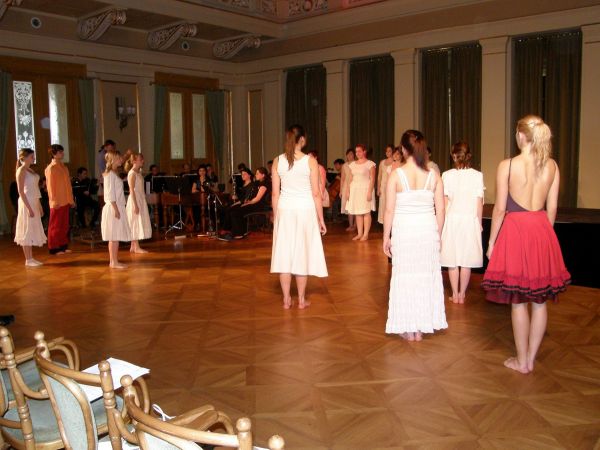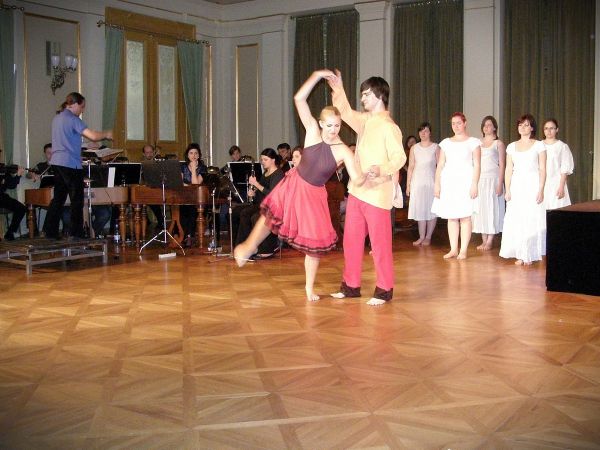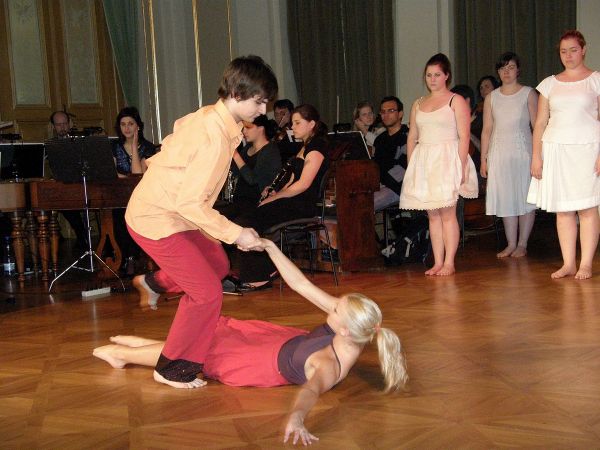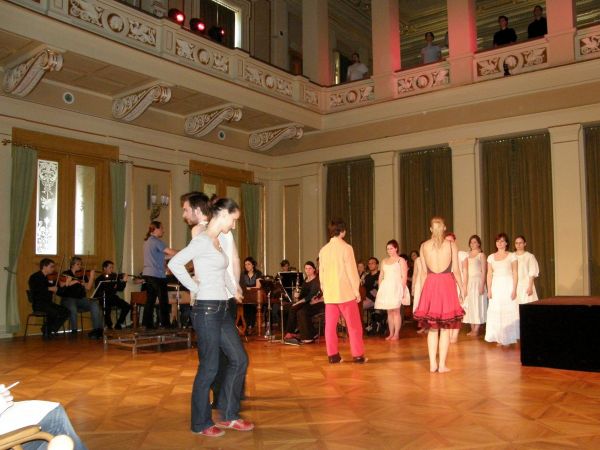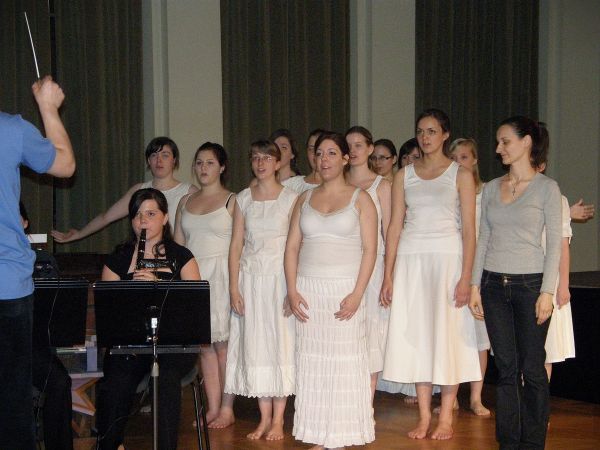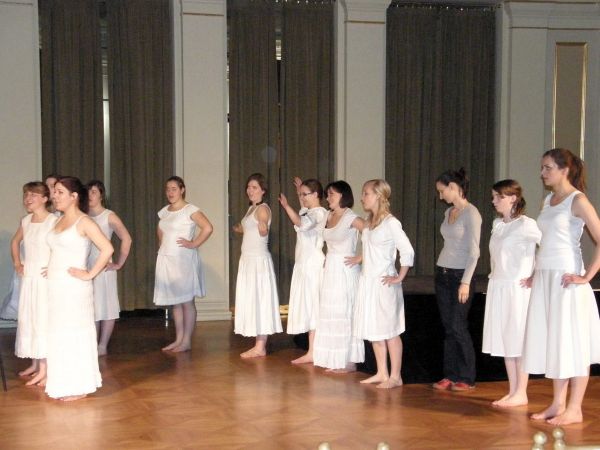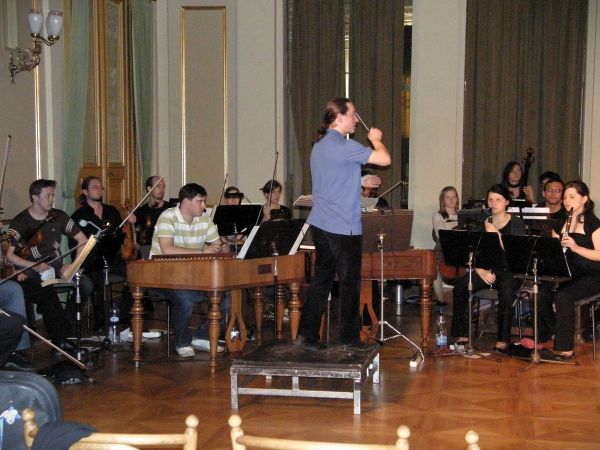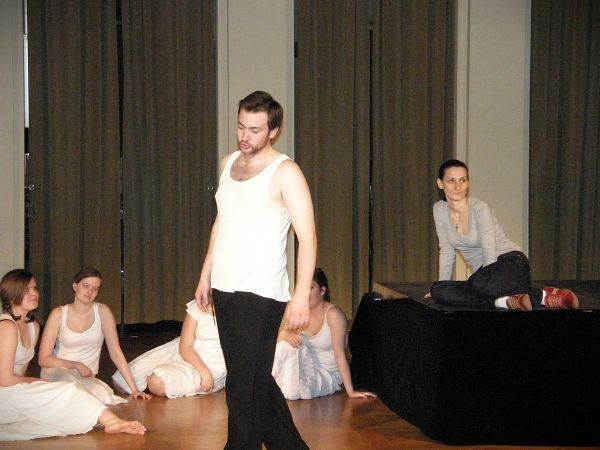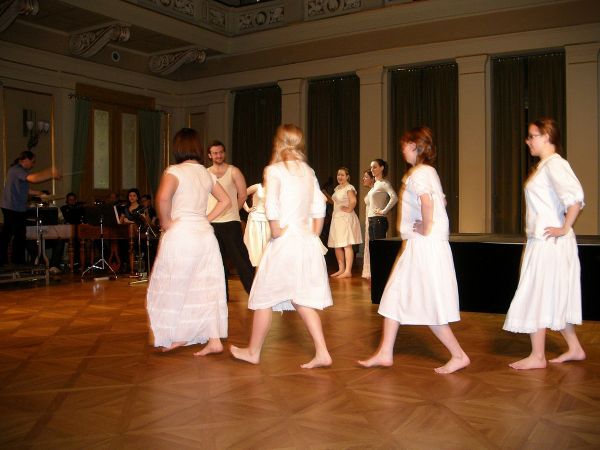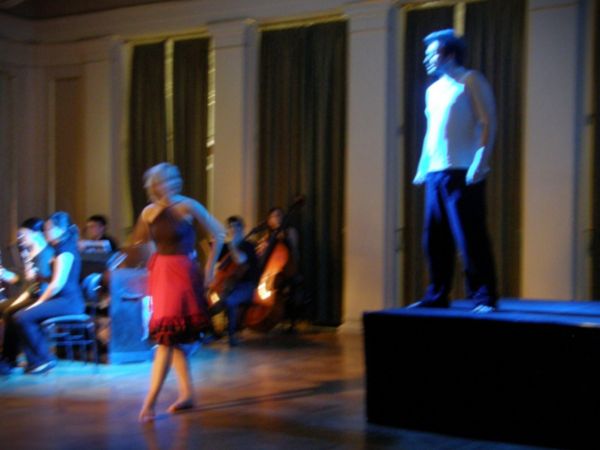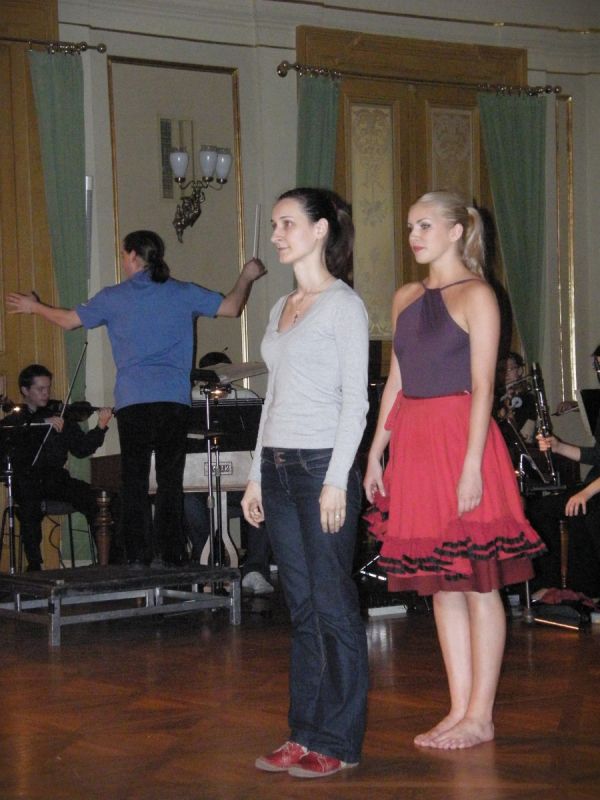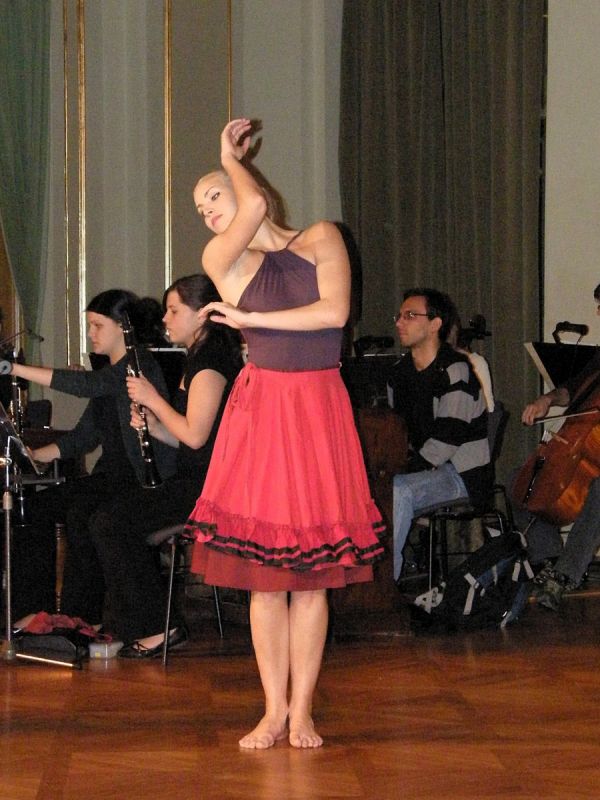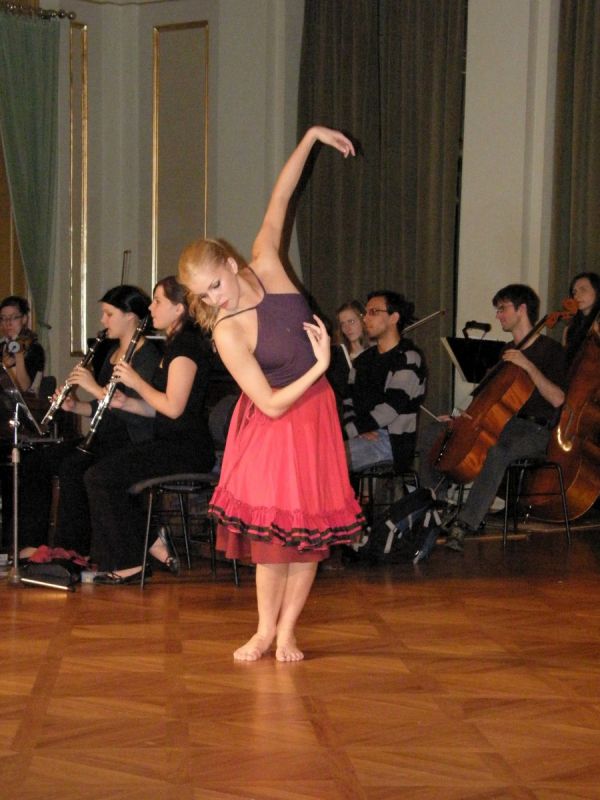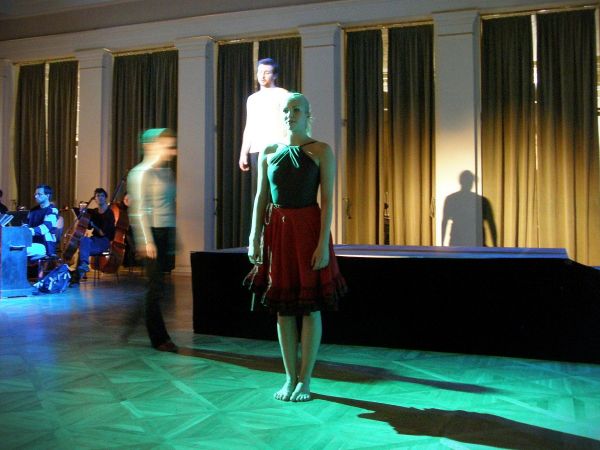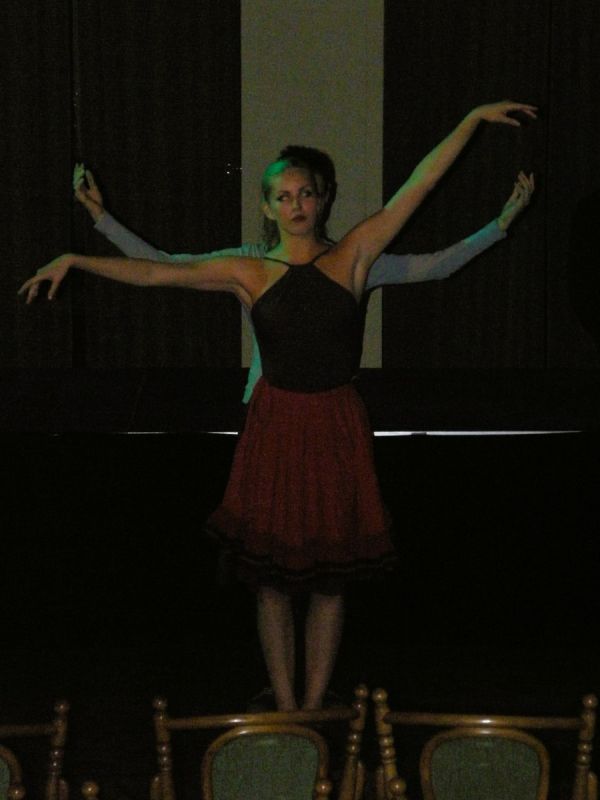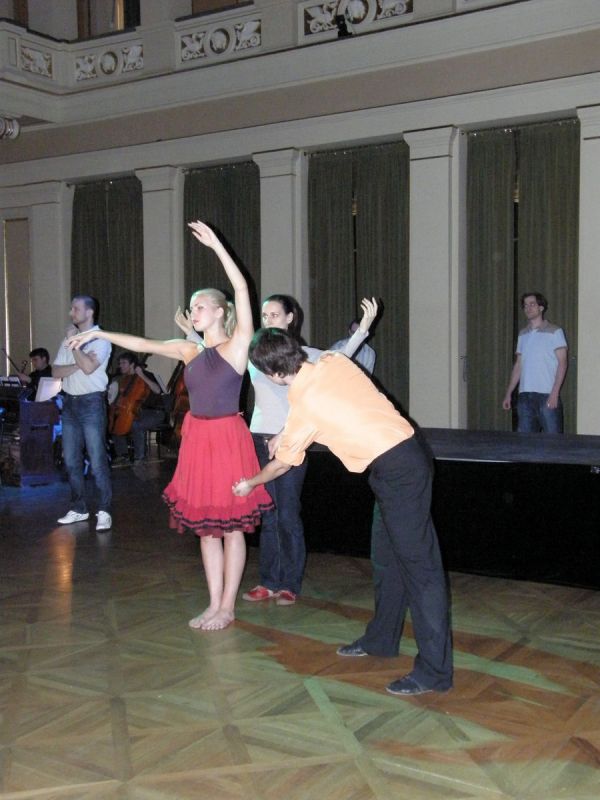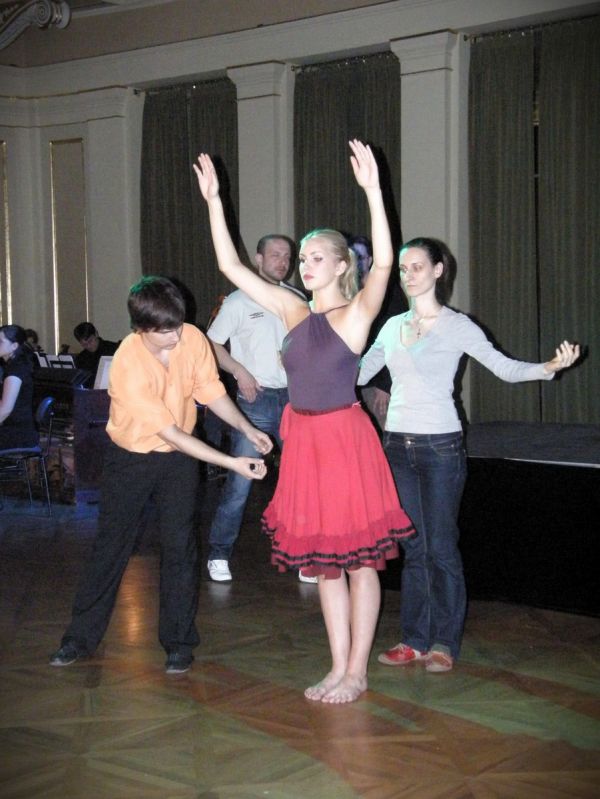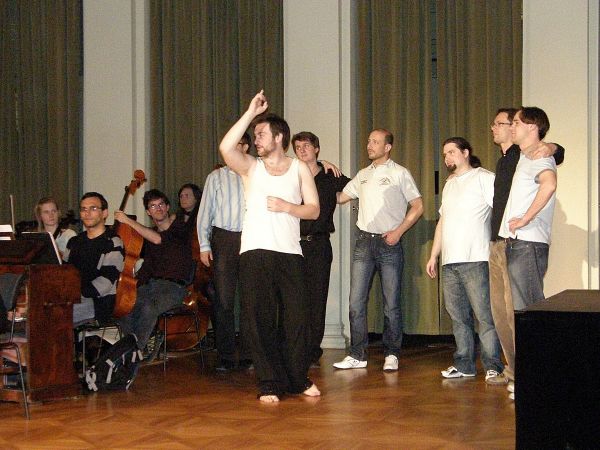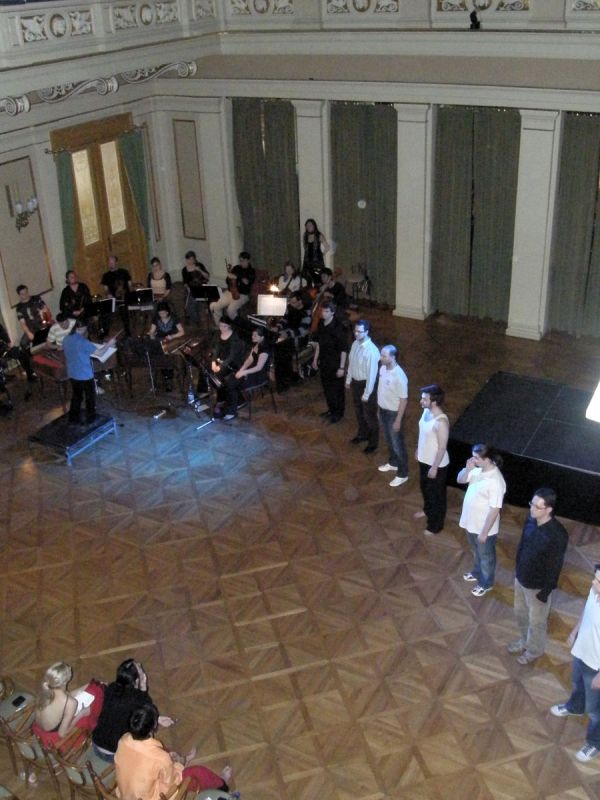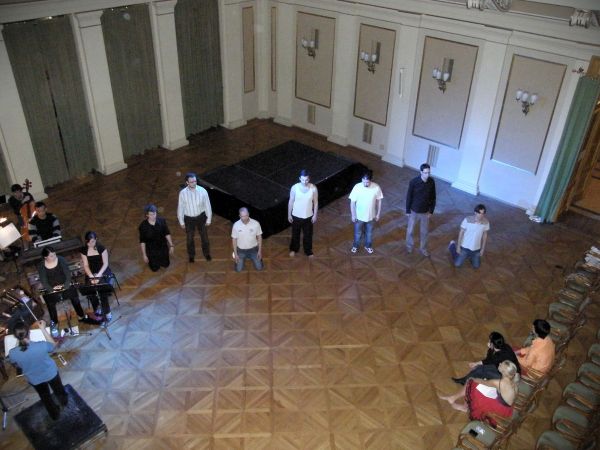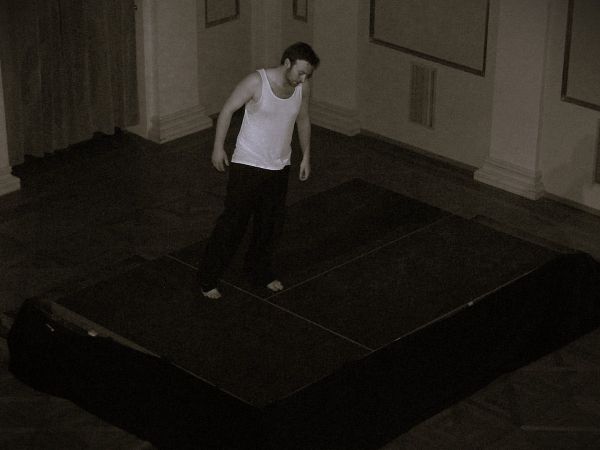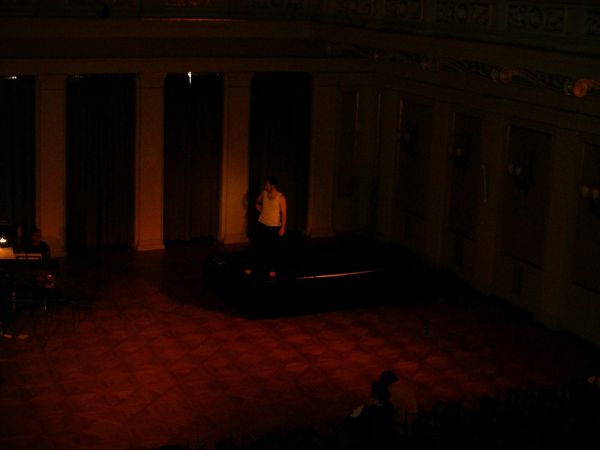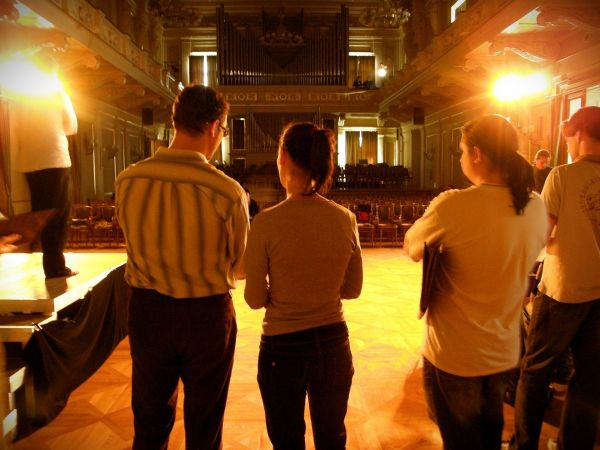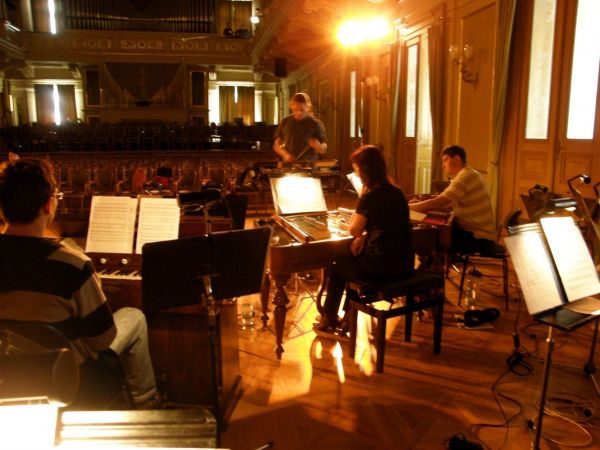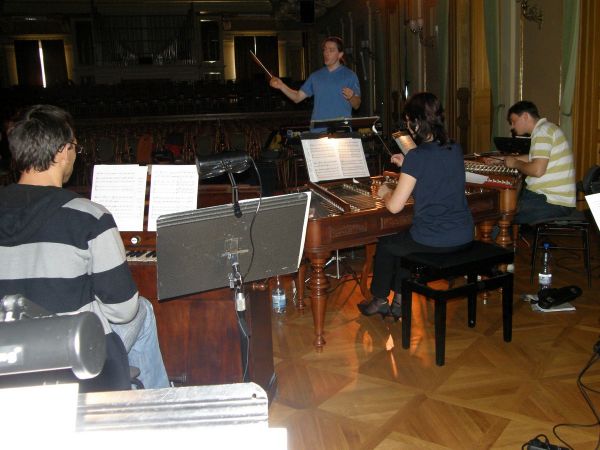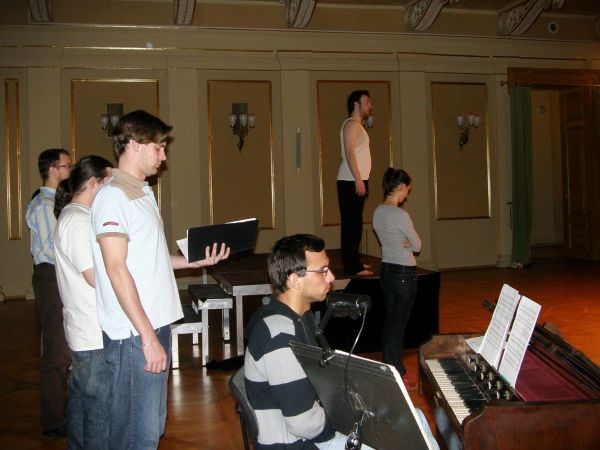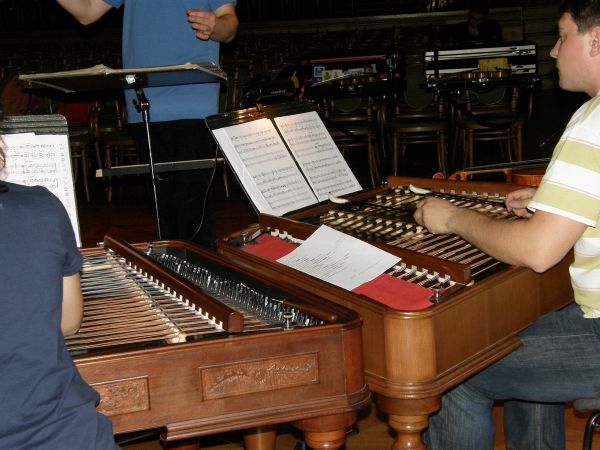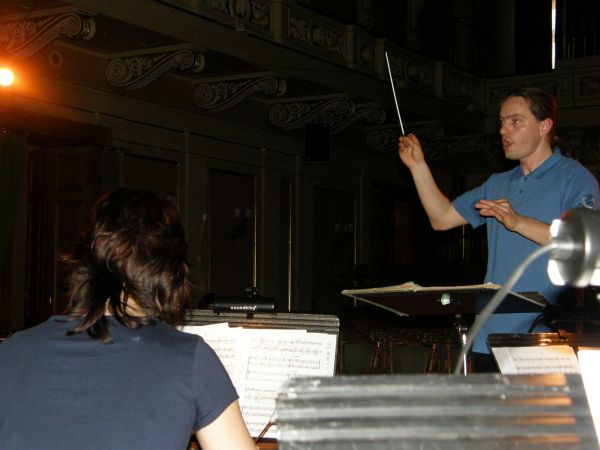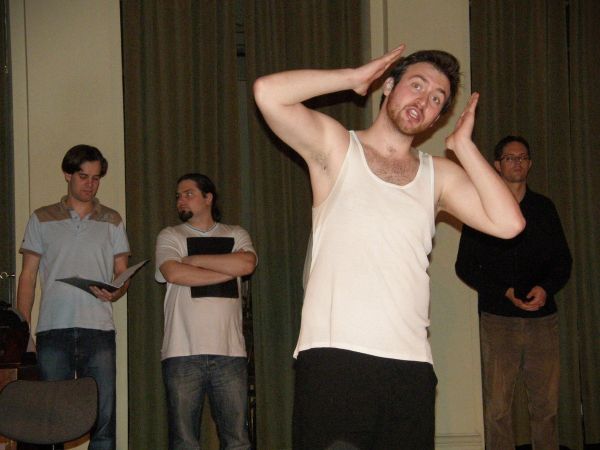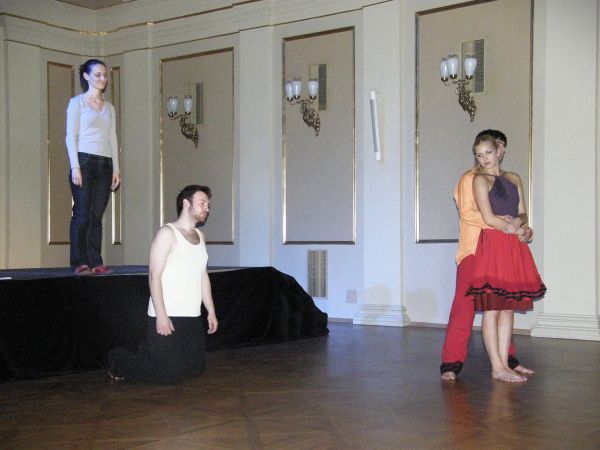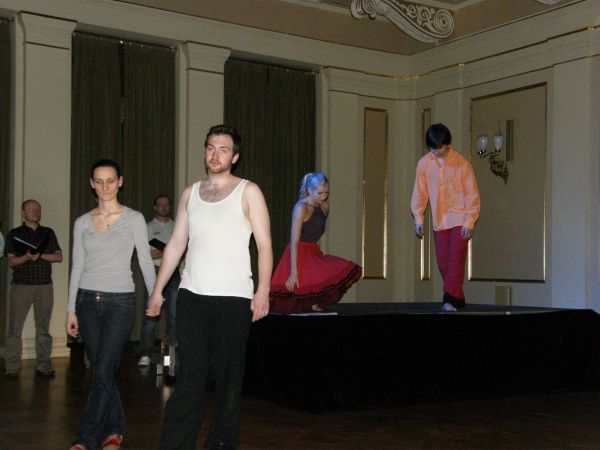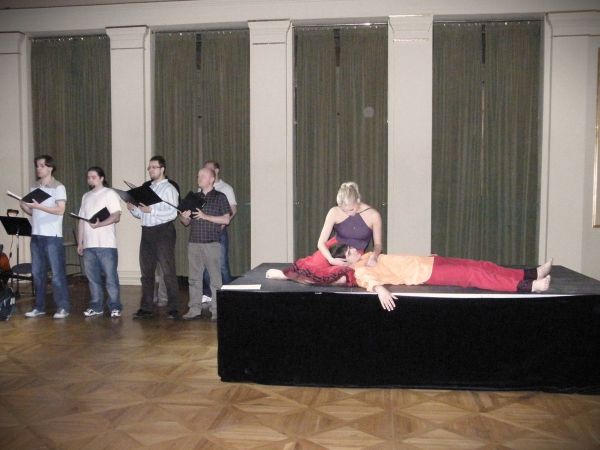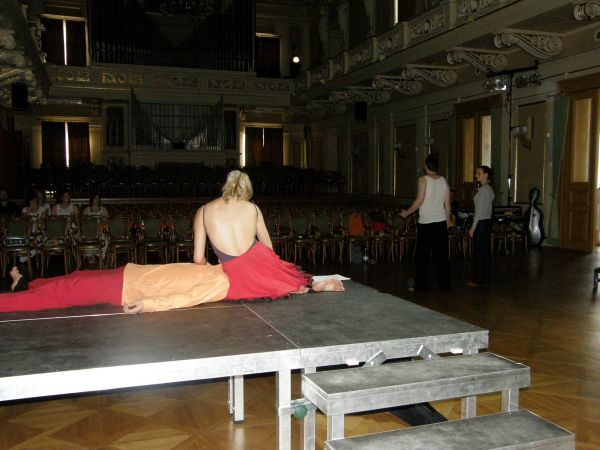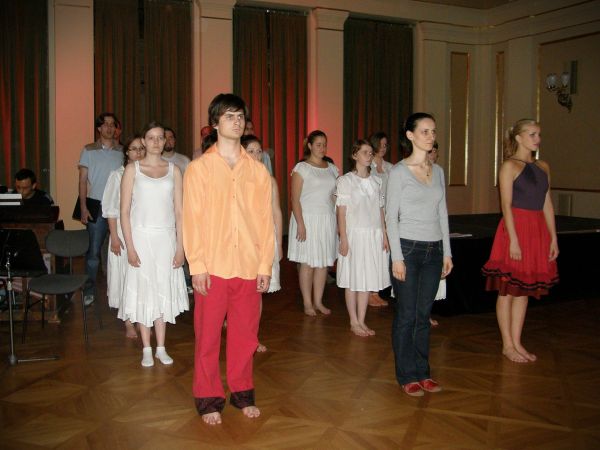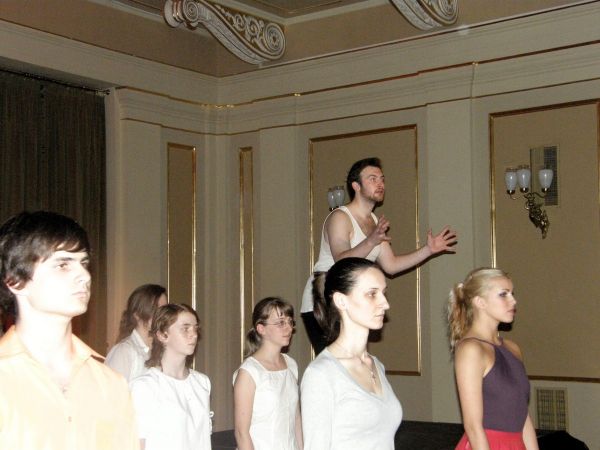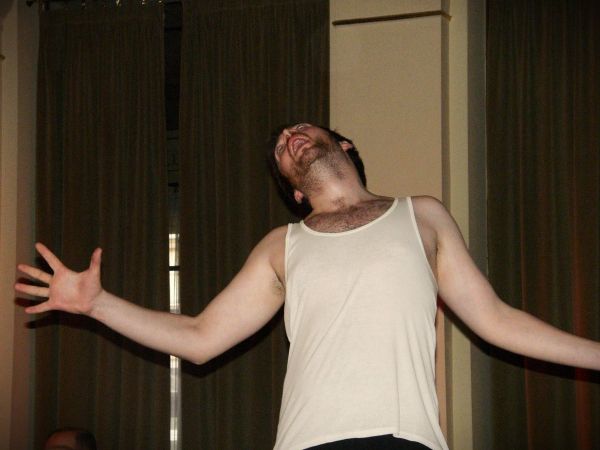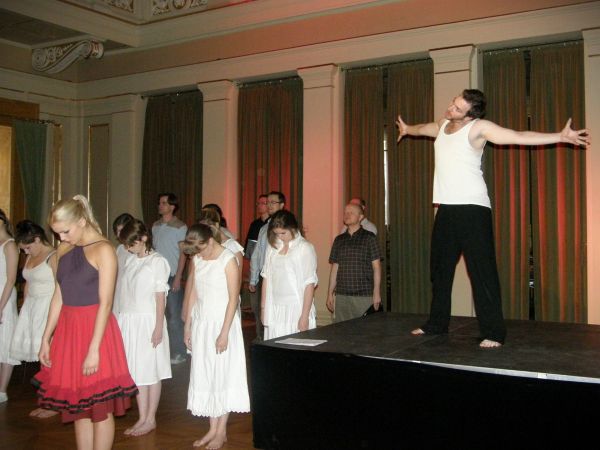
Stage Performances
Janáček’s Loves: A Living Memory of Voice, Body, and Land
On May 6 and 7, 2010, the Brno Philharmonic, as part of the Jeunesses musicales subscription series, presented a staged performance of the song cycle Čierna zem titled Janáček’s Loves. The evening, dedicated to arrangements of Leoš Janáček’s folk ballads and songs, offered audiences an experience on the border of concert, theater, ritual, and existential expression.
The very arrangement of the Besední dům hall was surprising: the audience was seated on the stage, while the action unfolded in the space typically reserved for spectators. The rear balconies of the hall became part of the scenic visual space, enabling light-symbolic work with depth and verticality. On the left side of the hall, the Opera Diversa chamber orchestra, conducted by Marek Čermák, was positioned. Two cimbaloms and a harmonium played a prominent role, their sonic texture defining the evening’s character. To the right stood a stark, universal, yet ritualistic black stage cube.
Lighting played a significant role: it shifted from pale dawn to icy night, from warm sunlight to a blood-red sunset. Each piece had its own lighting character, enhancing both the musical and dramatic layers.
The program drew from the repertoire of the Čierna zem recording (J&M, 2008), with the same cast: soloists Jana Krajčovičová and Jiří M. Procházka, the Opera Diversa orchestra, a women’s and men’s choir, and two dancers—Nikola Skřekucká and Tomáš Bakyta (VŠMU Bratislava). Their movement-dramatic alter egos enriched the stories of the folk ballads with striking visual and emotional power, whether depicting a girl as a tree and a boy with an invisible axe or the silent spirits of the past.
The evening began with a young girl (Tereza Kolmačková, Kantiléna) singing a simple morning melody. This was immediately followed by a stark contrast: Janáček’s Presto from the Suite for Strings exploded beneath her lingering line. This clash of lyricism and drama set the evening’s fundamental dynamic.
The pieces flowed in a loosely connected sequence. Lyrical sections—Ej, žalo dievča and Náš Janýčko malovaný—gave way to darker, more intense bandit ballads (Ej, nebudem ja dobrý and Ej, šetko ľudi vravia). Scenes ranged from romantic and idyllic to ironic and tragic. The soloists served as both narrators and characters, while the dancers embodied images, bodies, and symbols.
The climax of the first half came with the song Putovali hudci—a choir of wandering musicians, harmonium, and repetitive rhythm creating a hypnotic loop. The image of a woman as a tree being felled carried an almost mythical power. The symbolism was clear and urgent, needing no explanation.
The second half introduced a military motif: a verbunk, departure to the front, and death. In V tom Velickém širém poli, the men’s choir sang with such raw urgency that the space transformed into a battlefield. The gradual collapse of individual singers, leaving only the soloist standing, was chilling and moving.
This was followed by personal reflection in Ej, sedeu sem ja sedeu… and the evening’s pinnacle: Ide Kračuň, ide…—a song about a son returning from war, vainly pleading with the earth to return his mother, whom he could not be with at her death. Jiří M. Procházka delivered an extraordinary performance—vocally and humanly. He fearlessly pushed to the edge, letting his voice crack, sob, and remain open to pain. He didn’t act. He sang the truth.
The program concluded with several more images: Ej, bude zima, bude mráz, sung by girls from above like falling snow; a dramatic intensification in A byl jeden zeman; or the tragic horror of Išly panny na jahody, its seemingly innocent opening hiding a murder driven by passion. The final shock was precise: the audience was left numb yet aware that everything they heard were authentic folk songs—recorded in nearby regions, sung, passed down, and lived.
Conclusion
The Janáček’s Loves project succeeded in creating a cohesive and impactful staged sequence that presented folk songs not as relics but as a vibrant, deeply human source of emotion, passion, pain, and fate. Music, words, movement, and light merged into a unified statement about what it means to love, leave, lose—and survive. Such a performance cannot merely be described. It must be felt.






